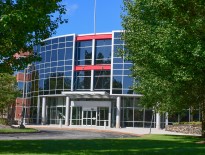
Ashley Lane
As the popularity of online retail and delivery services has exploded, so has demand for warehouse space – particularly for buildings that can handle last-mile delivery and urban logistics.
According to the U.S. Department of Commerce, e-commerce growth is setting records, accounting for 13 percent of total retail sales in 2017. Amazon Prime memberships have increased 30 percent per year since 2011.
Greater Boston has not historically been known as a national industrial core. However, the rise of e-commerce means that urban areas across the country are evolving into delivery hubs. These central locations are responsible for the distribution of consumer goods, most of which have been purchased online.
Boston is no exception – the e-commerce surge has impacted our warehouse market in a very positive way. Between 2000 and 2015, warehouse vacancies in the region averaged between 12 and 16 percent. The sector closed the first half of 2018 with a scant 5.9 percent vacancy rate – a plunge driven entirely by the advent of e-commerce.
This boom is also leading to a wave of redevelopment and new construction. Much of the existing warehouse stock in Greater Boston is not equipped to meet the demand of today’s sophisticated tenants. The average age of an existing building is 41 and only 6.5 percent of the 90.3 million square-foot inventory has a clear height over 32 feet.
Higher clear heights mean higher storage capacity. In warehouse parlance, it’s called “cubing out,” or maximizing storage volume per square foot. A footprint with higher clear heights can accommodate 10 to 25 percent to more product – a desirable feature for a tenant paying rent by the square foot. Overall, warehouse rents are up nearly 35 percent in the past 24 months. For clear heights over 32 feet, rents are up 50 percent in newer product.
Inner Suburban Rents Spike Sharply
The trend of rising rents and growing demand has been especially notable in the inner suburban industrial market. Over the last 24 months, Boston’s inner suburban asking rents have risen nearly 30 percent. The location is obviously highly desirable because of its proximity to both downtown Boston and the suburbs. At 6.2 percent, inner suburban warehouse vacancy is at a historical low.
In the Boston West market – a 2 million-square-foot swath encompassing Brighton, Cambridge, Somerville and Watertown – vacancy stands at just 4.8 percent. These figures are driven not only by spiking demand, but also by a shrinking inventory, as many longstanding buildings have been repurposed or demolished.
Not surprisingly, this market dynamic is luring in developers and investors. Over 3.6 million square feet of existing warehouse product traded hands in the first half of 2018 while nearly 2 million square feet are currently under construction or recently delivered, about half of which is speculative.
“Given the e-commerce trends we’re seeing, companies are increasingly aware that the bulk of their business will be online, and they have to prepare for that,” said Kevin Hanna, executive director at Cushman & Wakefield. “Developers can take advantage of this trend by creating huge warehouses to hold product, but before they build, they need to factor in the following: What does that warehouse space look like? What will the needs be in 10 years? What are the trends that need to be factored in? There is opportunity to accommodate this new demand by building. The warehouse of the future is designed for automation given the larger bay spacing for circulation, heavier power to accommodate charging robots and higher clear heights. The rent that can be achieved justifies going ahead and building in this new way.”
Boston has always been at the forefront of innovation, from the post-World War II defense technology boom, to the advent of America’s Innovation Highway and the development of gene-editing technology CRISPR. As the gritty warehouses of yesterday give way to sophisticated accommodations for finely tuned supply chains, it appears we can add industrial innovation to the list.
Ashley Lane is vice president of research for Cushman & Wakefield in Boston.




 |
| 
